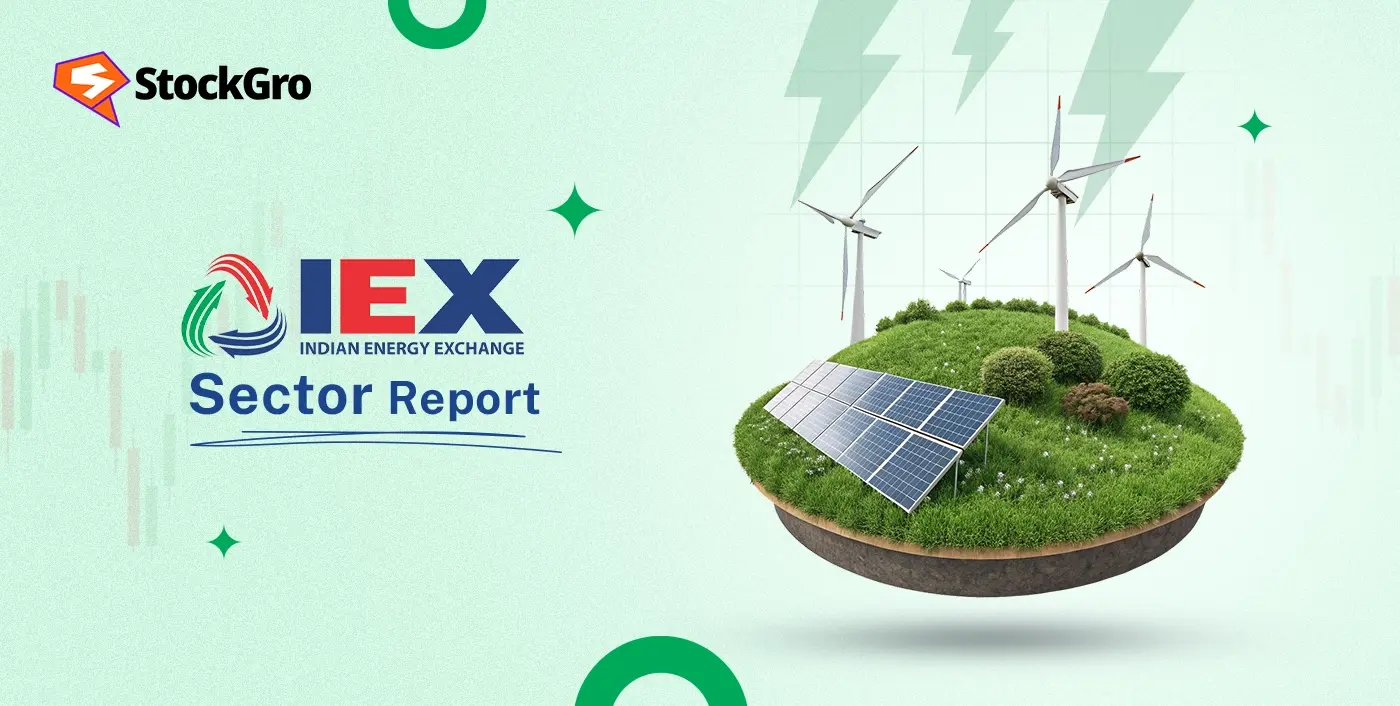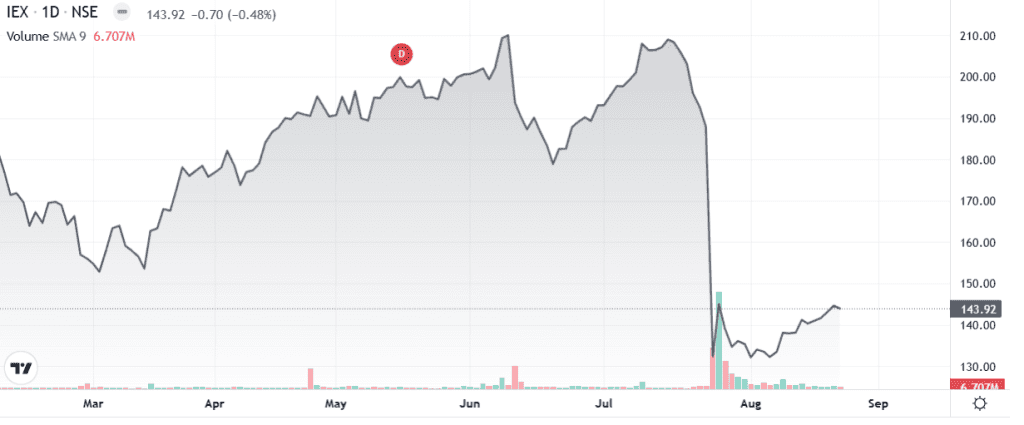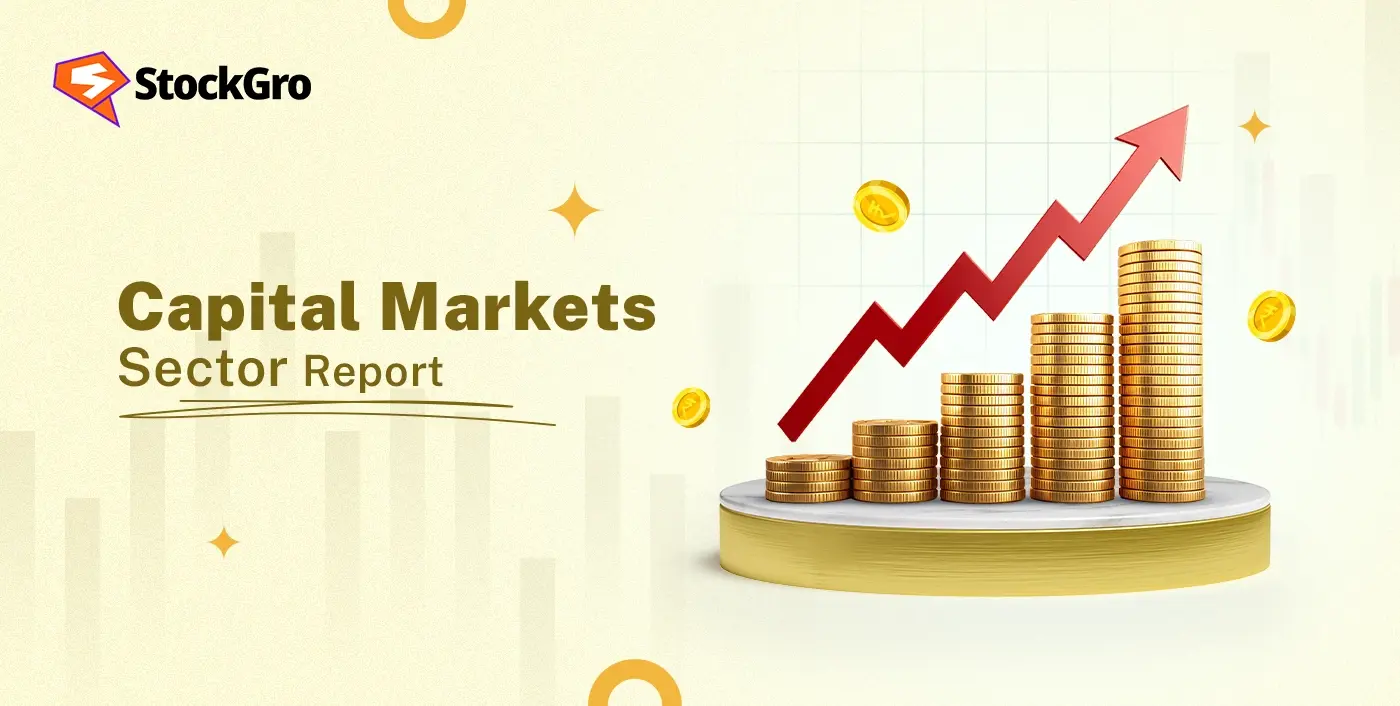
Stock overview
| Ticker | IEX |
| Sector | Capital Markets |
| Market Cap | ₹ 12,500 Cr |
| CMP (Current Market Price) | ₹ 140 |
| 52-Week High/Low | ₹ 244/ ₹ 130 |
| P/E Ratio | 29x |
| Beta | 1.05 |
About IEX
Business: Electronic platform for short-term power trading—electricity (DAM/RTM/TAM/G-segments), Renewable Energy Certificates (RECs), and related products.
Model: Asset-light, transaction-driven revenues with very high operating leverage; profitability tracks volume × take-rate.
Here is the business model of IEX :
Core segments (pre- and post-coupling relevance):
- DAM (Day-Ahead Market): Core liquidity pool (hourly delivery next day). Historically IEX’s strongest network effects. Most impacted by coupling.
- RTM (Real-Time Market): 24×7 auctions; structurally growing with RE variability and discom balancing needs. Strategic buffer vs DAM changes.
- GDAM/G-segments: Green day-ahead/green term products; benefit from rising RPOs and RE integration.
- TAM (Term-Ahead up to 11 days): Smaller share; customer stickiness via flexibility.
- RECs/E-certificates: Policy-linked, cyclical; high-margin add-on.
Revenue drivers:
- Transaction fees within regulatory caps (per MWh basis).
- Listing/ancillary and data services (small but rising).
- Operating leverage—costs grow much slower than volumes.
Market Coupling – What It Means
Concept: A centralized algorithm aggregates bids/offers from all power exchanges to produce a single uniform clearing price and allocation (initially in DAM). Exchanges no longer compete on price discovery in the coupled product; they compete on service, tech, fees within cap, credit/collateral terms, connectivity, and product breadth.
Likely phased approach (high-level):
- Phase 1: DAM coupling (most visible).
- Phase 2 (possible): Extension to green DAM or other segments after pilots.
- Oversight/Readiness: Tighter governance, data sharing, audit/compliance.
What changes for IEX?
- Liquidity flywheel is tested: If price is uniform everywhere, the “go-to venue” advantage weakens.
- Take-rate pressure risk: Exchanges may push pricing/terms (within caps) to gain volume share.
- Product/tech differentiation matter more: RTM, green products, analytics, APIs, OMS/EMS integrations, member tools, settlement ease, and service quality become primary battlegrounds.
Primary growth factors for IEX
1. Electricity Market Deepening: Greater share of short-term trading in India’s power consumption mix (currently ~10%, vs global average of 30-40%).
2. Green Energy Push: IEX to benefit from renewable energy integration, where variability drives short-term trading.
3. Cross-Border Trade: Expanding opportunities with Nepal, Bhutan, Bangladesh.
4. Retail Participation: Growing open access demand from corporates and industries.
5. High Operating Leverage: Rising volumes directly expand margins due to fixed-cost model.
Q1 FY26 Financial Performance
| Metric (values in ₹. Cr ) | Q1 FY 26 | YoY Growth | QoQ Growth |
| Revenue | 141 cr | 15% | 0% |
| Operating Expense | 32 cr | 8% | 22% |
| PBT | 158 cr | 24% | 4% |
| Profit after Tax | 121 cr | 25% | 3% |
- IEX reported a revenue of ₹141 Cr at an impressive 15% growth vs Last Year.
- The business reported a 25% growth in PAT and a 24% growth in PBT vs Q1 FY 25.
- The stock has witnessed sharp correction after the structural challenges that could come into place after the coupling news came into the mainstream.
Detailed competition analysis for IEX
| Company | Market Cap | Revenue | P/E Multiple | RoCE |
| IEX | 12,500 Cr | ₹ 141 cr | 29x | 53% |
| BSE | 94,700 Cr | ₹ 958 cr | 59x | 46% |
| MCX | 40,500 cr | ₹ 373 cr | 62x | 42% |
- Premium valuation was justified so far due to monopoly status, asset-light model, high RoE.
- However, future growth and valuation will depend on regulatory stability and continued increase in short-term market volumes.
Company valuation insights: IEX
As per the Discounted Cash Flow analysis:
It estimates the intrinsic value of IEX shares based on expected future cash flows:
- Intrinsic Value Estimate: ₹155 per share
- Upside Potential: 10%
- WACC: 11.4%
- Terminal Growth Rate: 2.1%
Major risk factors affecting IEX
1. Regulatory Risk: Heavy dependence on CERC and government policy.
2. Competition Risk: Entry of Power Exchange India Ltd (PXIL) and new players, though IEX has a dominant share.
3.. Price Volatility: Market stability depends on demand-supply dynamics, fuel availability (coal, gas).
4. Dependence on Short-Term Market: Long-term PPAs still dominate India’s electricity consumption.
Technical analysis of IEX
- Resistance: ₹145
- Support: ₹135
- Momentum: Neutral to Bearish
- RSI (Relative Strength Index): 51 (Neutral)
- 50-Day Moving Average: ₹155
- 200-Day Moving Average: ₹164

IEX stock recommendation by Ketan Mittal
Stay Cautious until Regulatory Hurdles around Coupling Settles
Target Price: ₹150 (12 months)If you found this helpful and want regular stock trade calls, check out my StockGro profile here: https://stockgro.onelink.me/vNON/6m6ykj0dConclusion
IEX remains a high-quality, cash-generative market infrastructure platform. Market coupling, however, is a genuine structural change that resets the moat around price discovery in DAM. Expect higher volatility and multiple dispersion until post-coupling data shows how share and take-rates settle.

